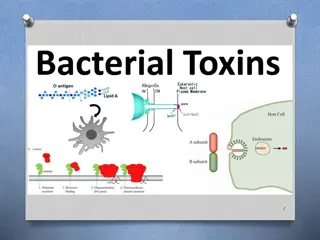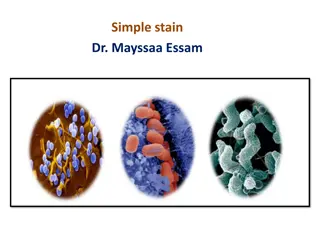Understanding Bacterial Colony Morphology for Microbiology Analysis
Bacterial colonial morphology plays a crucial role in identifying bacteria and fungi. This exercise focuses on recognizing the cultural characteristics of bacteria on agar plates through colony morphology. Each colony represents a genetically similar group of microorganisms derived from a single cell. By observing and analyzing the features of colonies, microbiologists can pinpoint the identity of different bacterial species. Explore the significance of colonial morphology in microbiology analysis with practical examples and visual representations.
Download Presentation

Please find below an Image/Link to download the presentation.
The content on the website is provided AS IS for your information and personal use only. It may not be sold, licensed, or shared on other websites without obtaining consent from the author. Download presentation by click this link. If you encounter any issues during the download, it is possible that the publisher has removed the file from their server.
E N D
Presentation Transcript
BACTERIAL Colonial MORPHOLOGY Prepared by Lecturer RehamM.M. AL-Mosawi Microbiology (Medical bacteriology)
BACTERIAL COLONY MORPHOLOGY A colony is defined as a visible mass of microorganisms all originating from a single mother cell, therefore a colony constitutes a clone of bacteria all genetically alike. In the identification of bacteria and fungi much weight is placed on how the organism grows in or on media. This exercise will help you identify the cultural characteristics of a bacterium on an agar plate---called colony morphology. Although one might not necessarily see the importance of colonial morphology at first, it really can be important when identifying the bacterium. Features of the colonies may help to pinpoint the identity of the bacterium. Different species of bacteria can produce very different colonies.























